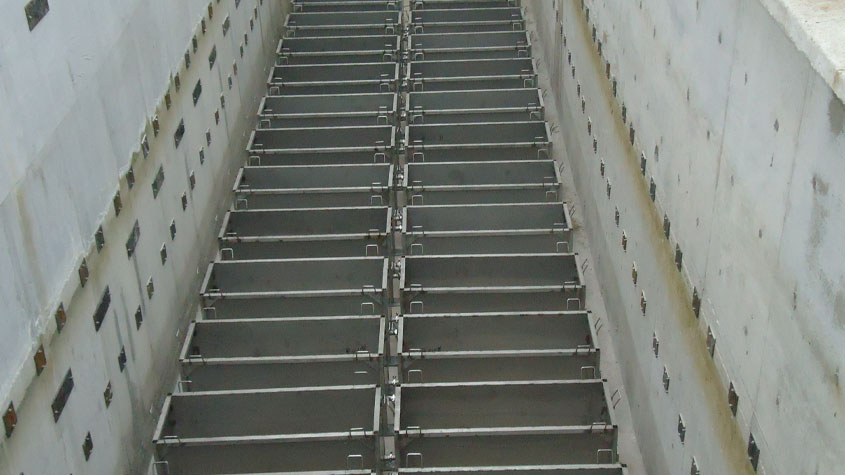
Efficient water treatment processes are crucial for industries and municipalities to meet stringent water quality standards and promote sustainability. Submerged flat sheet membrane elements have emerged as a key technology in achieving high-performance water treatment systems. This article explores the benefits of submerged flat sheet membrane elements, highlighting their role in maximizing efficiency, improving water quality, and contributing to sustainable water management.
1. The Importance of Efficient Water Treatment:
Efficient water treatment is essential for industries and municipalities to ensure the availability of clean and safe water for various applications. It involves the removal of suspended solids, bacteria, viruses, and other contaminants from water sources. Submerged flat sheet membrane elements play a vital role in achieving efficient water treatment processes, providing numerous benefits over traditional filtration methods.
2. Introduction to Submerged Flat Sheet Membrane Elements:
Submerged flat sheet membrane elements are key components of advanced water treatment systems. These elements consist of flat sheet membranes with microscopic pores that act as a physical barrier, allowing water molecules to pass through while retaining impurities. The submerged configuration of these elements ensures continuous filtration, resulting in high-quality treated water.
3. Benefits of Submerged Flat Sheet Membrane Elements:
a) Superior Filtration Performance: Submerged flat sheet membrane elements offer exceptional filtration efficiency, effectively removing suspended solids, bacteria, viruses, and even certain organic compounds. The small pore size of the membranes ensures the production of high-quality treated water, meeting stringent water quality standards.
b) Enhanced Water Recovery: Submerged flat sheet membrane elements enable a significant portion of treated water to be recovered, reducing water wastage and improving overall water use efficiency. This is particularly important in water-scarce regions or industries with high water demands.
c) Consistent and Reliable Operation: The submerged configuration of membrane elements allows for continuous filtration, ensuring a consistent supply of purified water. This minimizes downtime for maintenance and maximizes system efficiency.
d) Space-Efficient Design: Submerged flat sheet membrane elements have a compact design, making them suitable for installation in various water treatment facilities, including small-scale and decentralized systems. This flexibility allows for efficient use of available space.
4. Applications of Submerged Flat Sheet Membrane Elements:
a) Municipal Water Treatment: Submerged flat sheet membrane elements are widely used in municipal water treatment plants for the production of drinking water. They effectively remove suspended solids, bacteria, and other contaminants, ensuring the delivery of clean and safe water to communities.
b) Industrial Water Treatment: Industries that require high-quality water for their processes, such as power generation, pharmaceuticals, and electronics, rely on submerged flat sheet membrane elements for water treatment. These elements provide a reliable and efficient solution to meet stringent water quality requirements.
c) Wastewater Treatment and Reuse: Submerged flat sheet membrane elements play a crucial role in treating wastewater and enabling its safe reuse. They effectively remove pollutants, including suspended solids, bacteria, and viruses, allowing treated water to be recycled for various non-potable uses, such as irrigation or industrial processes.
5. Contribution to Sustainable Water Management:
The adoption of submerged flat sheet membrane elements in water treatment aligns with the principles of sustainable water management:
a) Water Conservation: Submerged flat sheet membrane elements enable the treatment and reuse of water, reducing the demand for freshwater resources. This addresses water scarcity issues and promotes efficient water management.
b) Energy Efficiency: The continuous filtration process of submerged flat sheet membrane elements minimizes energy consumption, reducing carbon emissions and promoting sustainable energy practices.
c) Chemical-Free Filtration: Submerged flat sheet membrane elements reduce the need for chemical additives in the treatment process, minimizing the environmental impact and operational costs associated with chemical usage.
d) Resource Recovery: The concentrated sludge generated during membrane filtration can be further processed to recover valuable resources, such as phosphorus or energy, contributing to a circular economy approach.
Conclusion:
Submerged flat sheet membrane elements play a crucial role in maximizing efficiency and improving water quality in various water treatment applications. Their superior filtration performance, enhanced water recovery, consistent operation, and space-efficient design contribute to sustainable water management practices. By adopting submerged flat sheet membrane elements, industries and municipalities can achieve efficient and reliable water treatment, ensuring the availability of clean and safe water while minimizing environmental impact. As the demand for efficient water treatment processes continues to grow, submerged flat sheet membrane elements will continue to play a vital role in maximizing efficiency and promoting sustainable water management.
About Jiangsu Peier membrane
Jiangsu Peier membrane corp.,Ltd(Stock Code: 836744) was established in 2007 with a registered capital of 48 million Yuan, referred to as “Peier membrane industry”.
It is a high-tech enterprise focusing on the R&D, production, manufacturing and service of MBR flat sheet membrane products. Its Peier Product category as below:
- Flat Sheet Membrane Element
- Flat Sheet Membrane Element-Single Nozzle
- Flat Sheet Membrane Element-Double Nozzle
- Flat Sheet Membrane Element-3D Soft Support
- Flat Sheet Membrane Element-Renovated Membrane
- Flat Sheet Membrane Module
- Flat Sheet Membrane Module-Module-Single Nozzle
- Flat Sheet Membrane Module-Module-Double Nozzle
- Flat Sheet Membrane Module-2S(Double Deck)
- Flat Sheet Membrane Module-3S(High Flux)
- Flat Sheet Membrane Module-Mini Module
- MBR System
- MBR System-Laboratory Test Equipment
- MBR System-Pilot Equipment
- MBR System-Package System
Peier membrane always adheres to R&D and cooperation with well-known universities at home and abroad, such as Tsinghua University, Sydney University, Nanjing University of technology, Changzhou University and Jiangnan University.
It is the editor in chief of the national industry standard HY/T252-2018 “submerged flat membrane element for water treatment”.
At present, it has 7 invention patents, 56 new utility patents, 4 software works and 1 appearance patent.



